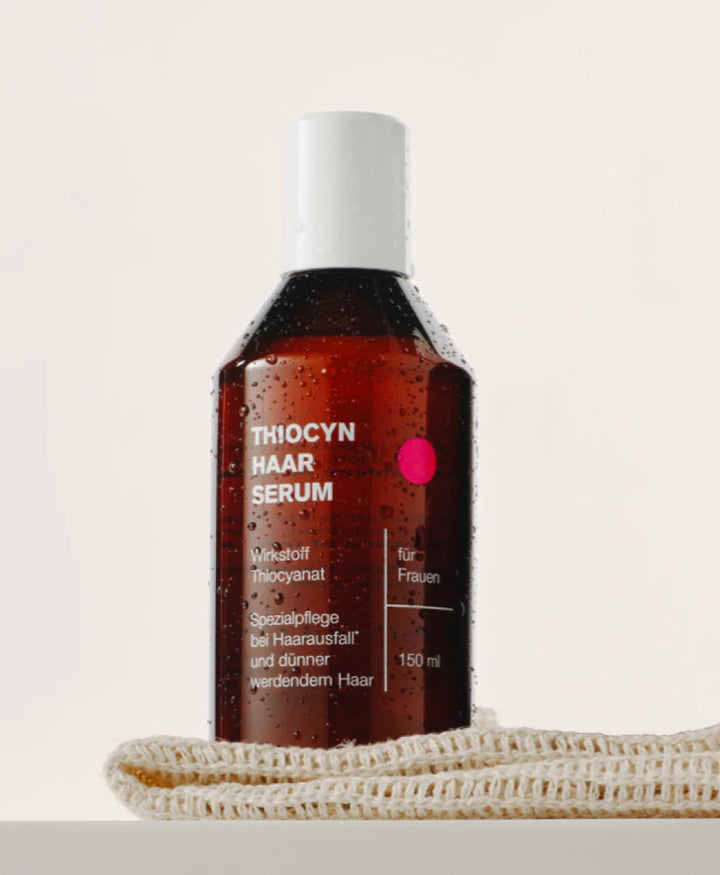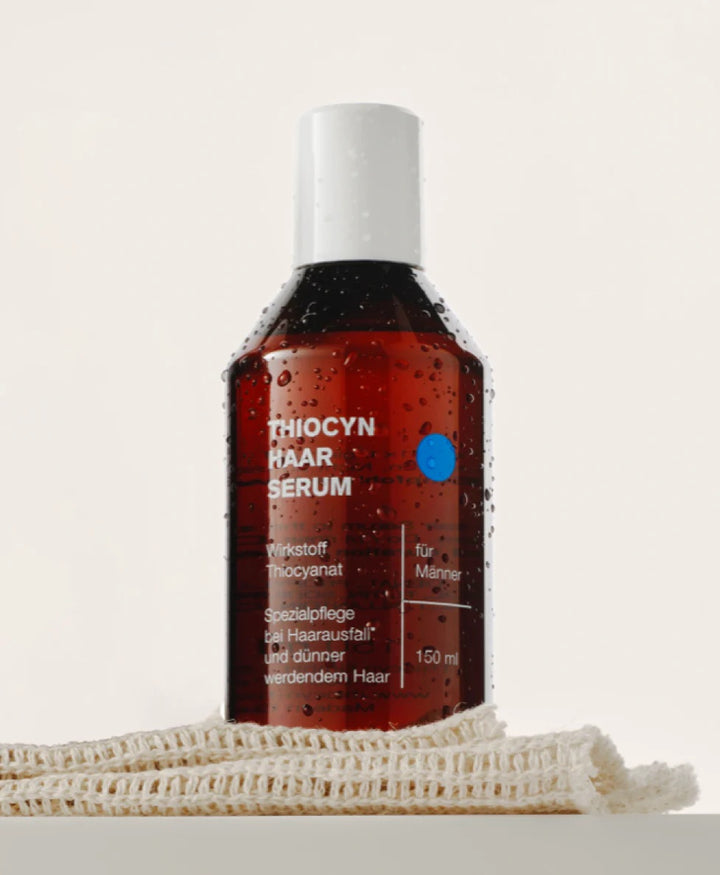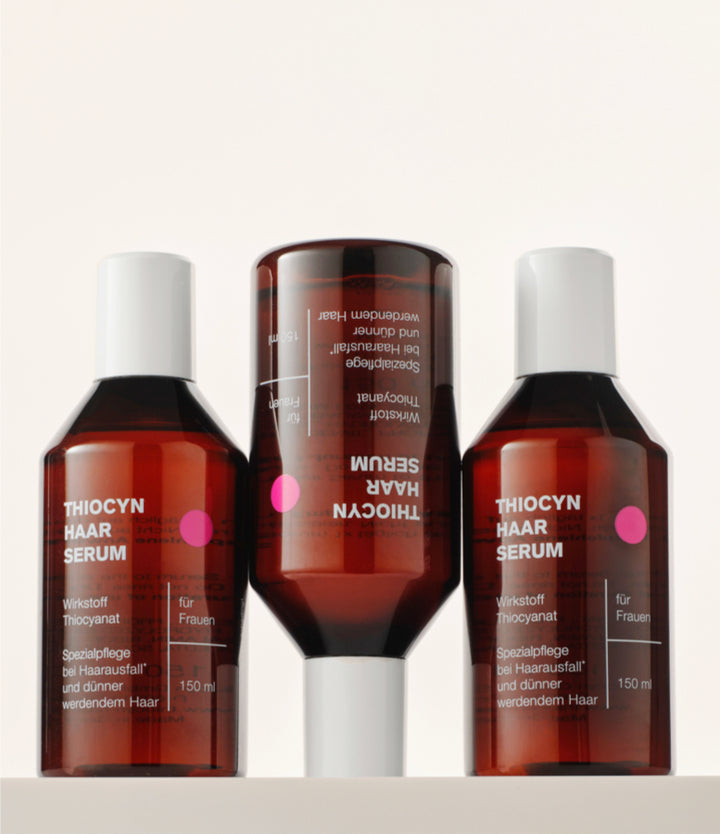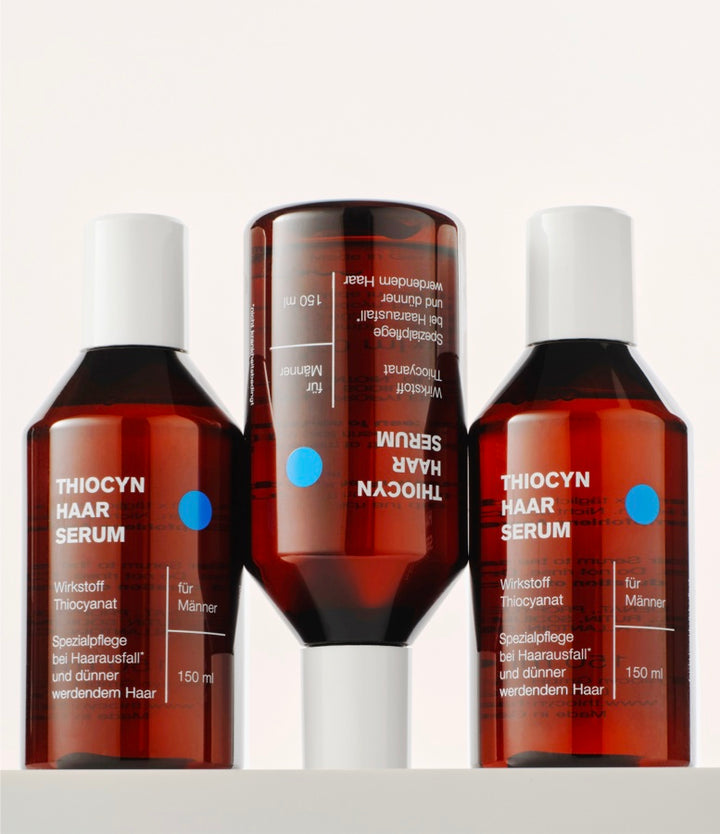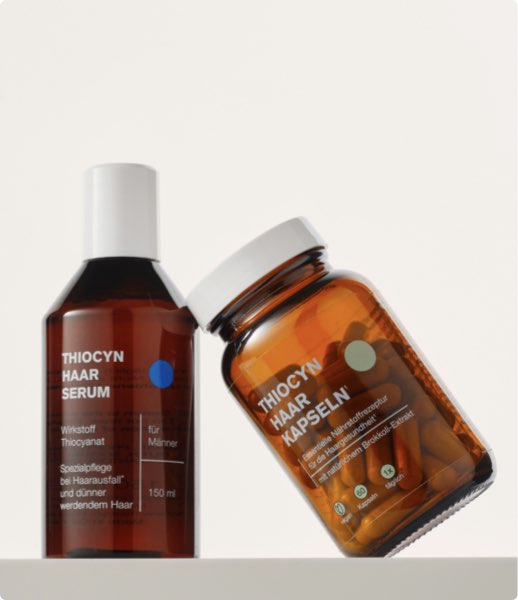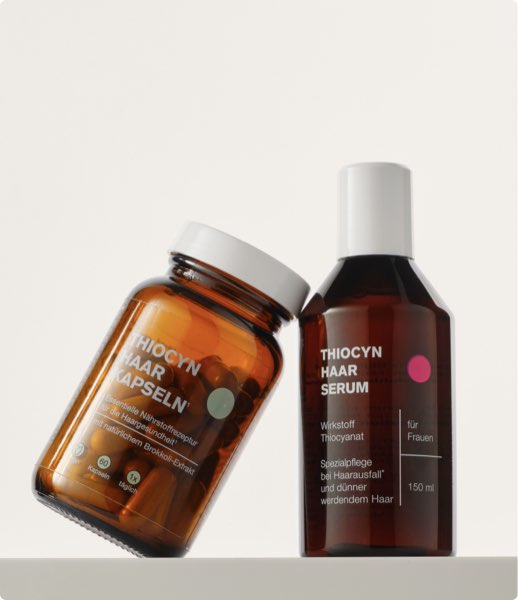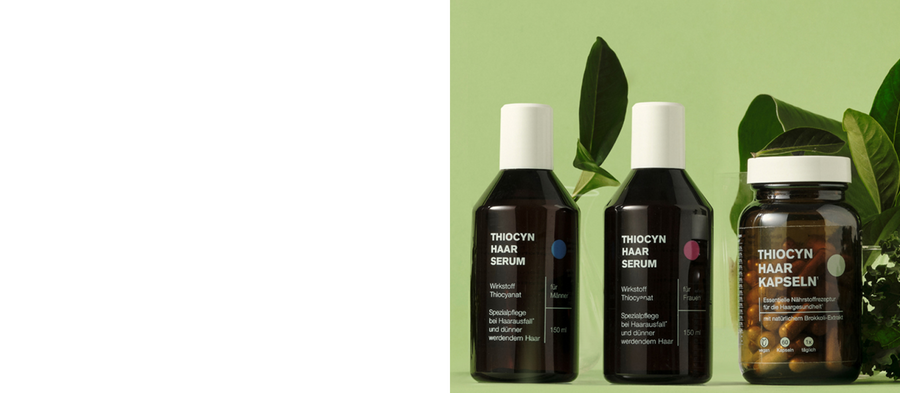| 04. July 2023
Hair loss at 20
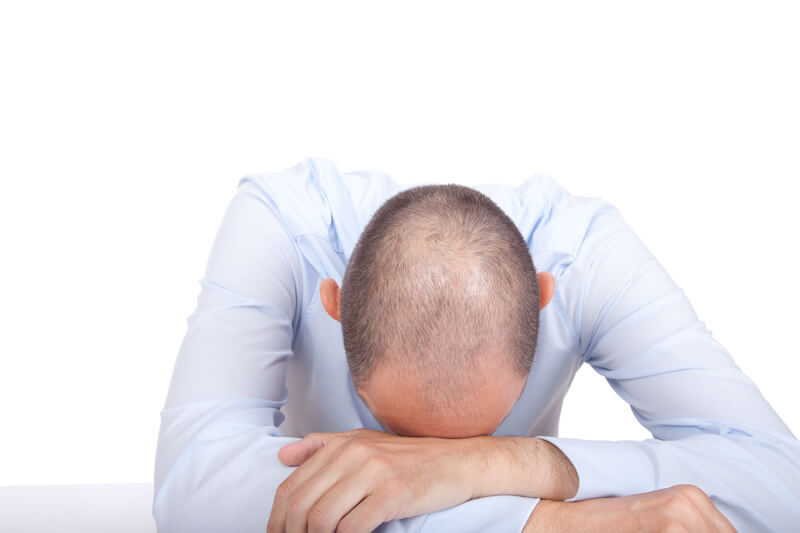
- Hair loss at 20 is in the vast majority of cases hereditary hair loss.
- Hair follicles and hair miniaturize as a result of the action of DHT.
- The hair cycle becomes overdrive; gradual hair loss begins.
- Hereditary hair loss cannot be cured, but there is a remedy.
- The natural active ingredient thiocyanate strengthens the hair roots and protects them from growth-disrupting influences.
For many young men, the joy of finally becoming an adult is severely dampened by their thinning hair. For a while, it's possible to ignore the hair loss : by styling your hair differently, wearing a hat, or simply getting it cut shorter. Hereditary hair loss can be concealed for a while, but not permanently. Hair density decreases. The hair recedes, sometimes more slowly, sometimes more quickly, often in spurts. We know of a natural ingredient that can help with hair loss* in your 20s.
Hair loss at 20 and thinning hair
Don't panic: Going bald or completely hairless at age 20 is relatively unlikely. Hereditary hair loss in men is a lifelong process. This process begins at the end of puberty and occurs in two phases: a few years around age 20 and a few years around age 40. Thinning hair or bald patches develop into a receding hairline and a tonsure, which eventually merge into a bald head. The hair on the sides of the head remains.
Hair loss can be more or less severe compared to brothers, fathers, and grandfathers. If father and son have comparable hair density at 20 and 30, the son's hair loss pattern at 40, 50, or 60 will closely resemble that of the father. The speed of hair loss also depends on genes: For example, a 20-year-old may already be almost bald, while another at 50 may just be noticing the first signs of hair loss.
Who is to blame for hair loss?
Young men often struggle with their fathers. Today, however, we know that the genes for hair loss also pass from the mother into the sons' genome, resulting in a hair loss pattern similar to that of the father on the maternal side, i.e., the grandfather. Since hair loss is not inherited through a single gene, but through several genes, it is difficult to predict whether and how hair loss will develop. One thing is certain: the sensitivity of certain hair follicles to a derivative of the male sex hormone testosterone, dihydrotestosterone (DHT), is genetically programmed.
What does the androgen DHT do?
DHT is very important during puberty for the development of boyhood into manhood. It also stimulates hair growth, especially body hair. The problem: The hair follicles that produce hair on the head cannot optimally process the DHT signals. The hair cycle becomes overstimulated, meaning the hair becomes smaller and more downy from cycle to cycle, miniaturizing until it finally disappears completely. Hereditary hair loss triggers gradual hair loss. Hairlessness induced by androgens is also called androgenetic alopecia.

OTHER CAUSES OF HAIR LOSS AT 20
DHT isn't the only cause of hair loss at a young age. If the metabolism of the hair root, which is actively dividing, is continuously disrupted, it makes it difficult for the hair follicles to produce hair. Other known disruptive factors include:
Oily hair
A sure sign of progressive hair thinning is quickly becoming greasy. Hair follicles that produce little or no hair for an extended period continue to have active sebaceous glands. Fewer hairs absorb more sebum. In other words, the hair becomes greasy more quickly.
Oily dandruff blocks the scalp's natural shedding process and is considered a nuisance to healthy hair growth. Constant scratching of the scalp due to itching damages the skin barrier and can lead to micro-inflammations caused by foreign bodies and irritants. Regular hair washing carries the risk of scalp dehydration.
Unbalanced diet
If the hair lacks building blocks such as proteins that form hair keratin or functional substances such as vitamins and trace elements due to an unbalanced diet, e.g., through fast food, it becomes increasingly difficult for the hair follicles to build hair substance. Hair follicles weakened by DHT exposure will end the growth phase and fall out even faster.
Constant stress
Dissatisfaction with one's own appearance as a result of hair loss, and the quite stressful phase of finding one's self as a young adult with its many psychological ups and downs, create stress that can negatively impact hair growth. Stress hormones like adrenaline also reach hair follicles and cause inflammation there. This stops hair growth and results in hair loss.
COMPENSATE FOR THIOCYANATE DEFICIENCY
One of the most underestimated causes of hair loss after 20 is a lack of thiocyanate.
Thiocyanate Thiocyanate is a molecule produced naturally in the body and thus a natural active ingredient that detoxifies oxygen radicals that inhibit hair regeneration. In other words, thiocyanate has an anti-inflammatory effect. As a result, it stabilizes cell metabolism and normalizes the hair cycle.
The problem: Water-soluble thiocyanate is washed out of the scalp with excessively hot water when washing your hair or taking a long shower. Therefore, it is recommended to compensate for the thiocyanate deficiency at the hair roots.
remedies for hair loss
Thiocyn Hair Serum, with its patented thiocyanate active formula, strengthens weakened hair roots when applied once daily and protects them from growth-impairing influences. Especially during the first, hereditary bout of hair loss, it can prevent hair follicles from miniaturizing. If a receding hairline and tonsure are beginning to appear or have already developed, thiocyanate stimulates thin, downy hair to regenerate into strong terminal hair.
QUESTIONS FOR OUR SERVICE TEAM
At what age can a young man consider a hair transplant?
A hair transplant isn't a question of age; it depends on the type of hair loss, or more specifically, on the extent of the hair loss. As long as the hair follicles are active and can be stimulated, there's always a chance of strong hair regrowth.
What if I've just had a hair transplant?
Wonderful! The transplanted hair follicles are not sensitive to DHT androgens. However, after the surgical trauma, it is recommended to strengthen the hair follicles before starting a new hair cycle.
How much hair loss is normal?
We experience daily hair loss, or hair shed, so that new hair can grow back. Dermatologists say losing 100 hairs a day is normal. Women clearly notice their hair shed when they brush their hair. Men barely notice their natural hair shed due to short haircuts.
Why do women have more hair than men?
Both men and women have up to 150,000 hairs on their heads. Due to the growth hormone estrogen, a hair cycle lasts up to eight years in women, while in men it averages only four to five years. Estrogen is also the best protection against hereditary hair loss and hair miniaturization.
Estrogens for men, a possibility?
Unlike women, men's hair follicles do not have estrogen receptors. Male hair cannot process the growth hormone estrogen.
READ BY 23,000 PEOPLE
Join 23,000 others and find out how to improve your hair health with great offers and discounts as well as helpful advice
